 This is the fifth installment of the Evacuation Preparedness Kit Series. The first post, on Evac Prep Basics is here, and the second post, which introduces the Evac Prep Master List is here. The third post, and the first post on the list review is here. This post will pick up where we previously left off in reviewing the categories on the Master List.
This is the fifth installment of the Evacuation Preparedness Kit Series. The first post, on Evac Prep Basics is here, and the second post, which introduces the Evac Prep Master List is here. The third post, and the first post on the list review is here. This post will pick up where we previously left off in reviewing the categories on the Master List.
Equipment
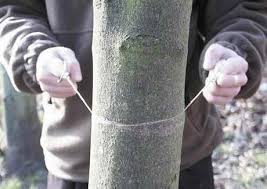
If you are CERT trained, you purchased a hardhat, goggles, ear plugs and vest when you bought your CERT kit. Your CERT supplies should be on your Evac list to grab but should also be in its own container so they are available to you if you are needed in a CERT role. If you’re not CERT trained, you should be, we’ll post bout that later.
 The Plastic Sheeting on the list is useful for many things but most notably for the ability to seal the airways in your house to inhibit air circulation. This is useful and could be necessary for survival in a Bio/Chemical/Nuclear situation.
The Plastic Sheeting on the list is useful for many things but most notably for the ability to seal the airways in your house to inhibit air circulation. This is useful and could be necessary for survival in a Bio/Chemical/Nuclear situation.
 A fire extinguisher should be in your Car Kit already and definitely there should be a couple around your house – if you can, stick another one in your Evac Kit or add it to you’re Don’t Forget List.
A fire extinguisher should be in your Car Kit already and definitely there should be a couple around your house – if you can, stick another one in your Evac Kit or add it to you’re Don’t Forget List.

 Surveyor Flagging can be used to mark a trail, would be useful in your Evac Kit as well as your BOB. A spare set of keys to pretty much everything – vehicles, house, ATVs, Gun Lockers, etc should definitely be in your Evac Kit, probably in your BOB and absolutely in your EDC. Additionally, it’s a good idea to have a spare full set of keys just in a bedroom drawer or somewhere out of site but convenient. I can’t count how many times I’ve needed that spare set!
Surveyor Flagging can be used to mark a trail, would be useful in your Evac Kit as well as your BOB. A spare set of keys to pretty much everything – vehicles, house, ATVs, Gun Lockers, etc should definitely be in your Evac Kit, probably in your BOB and absolutely in your EDC. Additionally, it’s a good idea to have a spare full set of keys just in a bedroom drawer or somewhere out of site but convenient. I can’t count how many times I’ve needed that spare set!
Light

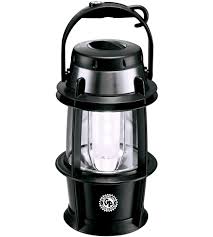

Light is another area where redundancy is your friend! The best way to ensure that you always have a light is to carry more than one light source in your Evac Kit, BOB, EDC, Car Kit, Office Kit, and wherever else makes sense. The main difference is the size of the light that you carry in each of your kits. Fortunately, technology has given us extremely small flashlights that are still extremely bright. LED flashlights are fantastic for their ability to last for a very long time without running down their batteries.


In your Evac Kit, I suggest keeping a couple strong flashlights, at least one lantern and several spare fuel/batteries for them. In your BOB a couple smallish flashlights will work great. I also keep an LED pack lantern (battery powered) in my BOB. For EDC, keychain style flashlights work great and a couple lightsticks will serve for a lantern.
Misc
Many of the items in this category are very useful but not necessary for your survival – with the exception of infant needs if you’re planning on having an infant with you. Wet Wipes are fantastic for keeping hands and faces clean. I suggest having at least a box of them in your Evac Kit and a travel pack of them in your BOB.
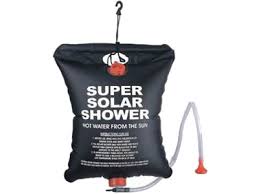 A camera can be fairly important to document an evacuation/crisis. However, many of us have decent ones on our phones and can use those. If you want to take a camera with you, it’s probably best to add it to your Don’t Forget List. A solar shower could make a huge difference in your evacuation experience, we keep 3 in our Evac Kit.
A camera can be fairly important to document an evacuation/crisis. However, many of us have decent ones on our phones and can use those. If you want to take a camera with you, it’s probably best to add it to your Don’t Forget List. A solar shower could make a huge difference in your evacuation experience, we keep 3 in our Evac Kit.
Fishing Equipment
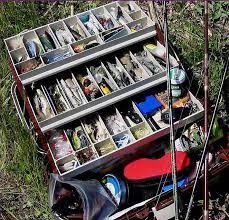 Having a complete set of fishing equipment with you will allow you to catch your own food during an evacuation to supplement your stored food.
Having a complete set of fishing equipment with you will allow you to catch your own food during an evacuation to supplement your stored food.
I suggest keeping it all in its own container and tackle box, usable day to day but ready to go. It’s a good idea to keep some line, sinkers, hooks and bobbers in your BOB for the same reason. You should probably add it to your Don’t Forget List as well since it’s possible it won’t be sitting with everything else.
Medical
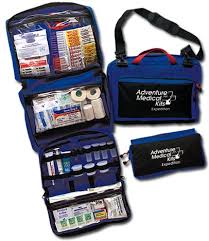 The amount and type of medical gear you carry is a personal decision. Because I have a daughter with Leukemia, I have a very extensive one. My opinion is that you should have a medical supply kit in your Evac Kit, an extensive First Aid Kit in your BOB and a light First Aid Kit in your EDC. The Master List has a pretty comprehensive list of items to keep in a Medical Kit and this post outlines the details of my Medical Kits.
The amount and type of medical gear you carry is a personal decision. Because I have a daughter with Leukemia, I have a very extensive one. My opinion is that you should have a medical supply kit in your Evac Kit, an extensive First Aid Kit in your BOB and a light First Aid Kit in your EDC. The Master List has a pretty comprehensive list of items to keep in a Medical Kit and this post outlines the details of my Medical Kits.
Documents/Money
 The Master List has a laundry list of documents that you may or may not have and which may or may not be important to you. The important thing is to consider each document and decide if it would be important for you to have – especially if you were unable to return home for an extended period of time. Any documents you feel you need, make copies or request original copies and put them all in a water proof container in which they can lay flat. Give careful consideration to Wills – if someone in your family dies during an evacuation things could potentially be very messy to get straightened up. Designation of Power of Attorney to your spouse, parents, or whoever can also be very important. Consider documents you might need if you end up staying in a shelter, etc.
The Master List has a laundry list of documents that you may or may not have and which may or may not be important to you. The important thing is to consider each document and decide if it would be important for you to have – especially if you were unable to return home for an extended period of time. Any documents you feel you need, make copies or request original copies and put them all in a water proof container in which they can lay flat. Give careful consideration to Wills – if someone in your family dies during an evacuation things could potentially be very messy to get straightened up. Designation of Power of Attorney to your spouse, parents, or whoever can also be very important. Consider documents you might need if you end up staying in a shelter, etc.
 If you don’t have one, I strongly suggest getting a fireproof/waterproof portable safe. You can get them at Wal-Mart for around $60.00. Store your document bag in it along with the money we’re about to talk about. Make sure you put the safe on your Don’t Forget List.
If you don’t have one, I strongly suggest getting a fireproof/waterproof portable safe. You can get them at Wal-Mart for around $60.00. Store your document bag in it along with the money we’re about to talk about. Make sure you put the safe on your Don’t Forget List.
Money
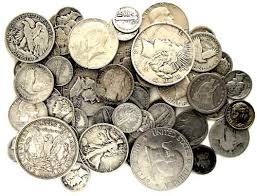 There are several forms of money suggested on the Master List, I suggest you set aside as many of the types as you can – store them in your portable safe. Once an evacuation starts crazy things can happen – ATMs run out of cash, power is out and credit cards don’t work, things that are cheap become in high demand and prices skyrocket. If the worse happens and there is an economic collapse, your paper money will be worthless. Precious metals like gold and silver however will still have intrinsic trade value – as will food, fuel, and other necessities. Having a cache of these with you will help ensure you can acquire the things you and your family need. I explain in detail about purchasing silver for this reason in this post.
There are several forms of money suggested on the Master List, I suggest you set aside as many of the types as you can – store them in your portable safe. Once an evacuation starts crazy things can happen – ATMs run out of cash, power is out and credit cards don’t work, things that are cheap become in high demand and prices skyrocket. If the worse happens and there is an economic collapse, your paper money will be worthless. Precious metals like gold and silver however will still have intrinsic trade value – as will food, fuel, and other necessities. Having a cache of these with you will help ensure you can acquire the things you and your family need. I explain in detail about purchasing silver for this reason in this post.
Electronic Files
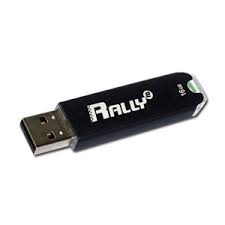 Unless you have a laptop with all your files on it, you can’t really take your computer with you and depending on the scenario, it might not be there when/if you get back. I very strongly recommend you get a 16 GB or larger USB Flash Drive that you can put all your digital pictures, documents, videos, etc. on. These are wonderful devices that can take a beating and will store all your files on them. Here’s one of our posts discussing this.
Unless you have a laptop with all your files on it, you can’t really take your computer with you and depending on the scenario, it might not be there when/if you get back. I very strongly recommend you get a 16 GB or larger USB Flash Drive that you can put all your digital pictures, documents, videos, etc. on. These are wonderful devices that can take a beating and will store all your files on them. Here’s one of our posts discussing this.
Info Cards
 I’ve seen several Info Cards over the years. I’ve taken several of those and several other suggestions and created a new one that matches the Master List. Some of the information you may not be comfortable with including or feel that it’s too personal, that’s fine, fill in whatever you feel is necessary.
I’ve seen several Info Cards over the years. I’ve taken several of those and several other suggestions and created a new one that matches the Master List. Some of the information you may not be comfortable with including or feel that it’s too personal, that’s fine, fill in whatever you feel is necessary.
You can download the Utah Preppers Info Card here.
There are a couple strategies with the Info Cards. First, each person in the family should have one in their BOB. For younger children this helps them have information on themselves that they probably won’t know. If they become separated from you or your spouse for some reason, it will help them get taken care of. If their is some kind of medical emergency with any of your kids, it will ensure that they have their information with them to help them get treatment.
Second, both parents should have copies of Info Cards for everyone in their family. If one of your children or your spouse goes missing during an evacuation, the card has everything on it you will need to post a missing persons report. Also, if you have to take anyone for medical treatment you will have all the information you need for them.
Don’t Forget List
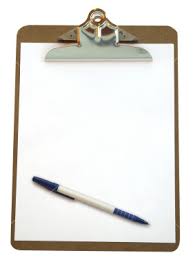 The Don’t Forget List is a checkoff list that will help you be extremely efficient if you have to evacuate. I recommend you print it out and keep it on a clipboard with a pen attached to the clipboard with a string. Store the clipboard on one of your storage shelves where you KNOW where it is. If you have properly maintained your Don’t Forget List, when you are evacuating you can grab it and start checking things off as you load them. You can also put where they are stored on the list (i.e. outside shed, garage, store room, buried in the backyard, etc), this will help if you’re are panicked and scatterbrained during the evacuation. If you’ve properly prepared and pre-staged, you should be able to load up in under half an hour.
The Don’t Forget List is a checkoff list that will help you be extremely efficient if you have to evacuate. I recommend you print it out and keep it on a clipboard with a pen attached to the clipboard with a string. Store the clipboard on one of your storage shelves where you KNOW where it is. If you have properly maintained your Don’t Forget List, when you are evacuating you can grab it and start checking things off as you load them. You can also put where they are stored on the list (i.e. outside shed, garage, store room, buried in the backyard, etc), this will help if you’re are panicked and scatterbrained during the evacuation. If you’ve properly prepared and pre-staged, you should be able to load up in under half an hour.
You can download the Utah Preppers Don’t Forget List here and add to it all you like.
Address/Phone Lists
A Phone and Address List will make sure you have critical information on how to reach those you need to. It may be that phone/cellular service is down and you have to drive somewhere, you’ll have addresses with you. Or, if you are somehow separated from your Mobile Phone (oh the horror!) and have to act like it’s the 80’s again, it will provide you with a hard copy of all your important numbers.
You can download and edit the Utah Preppers Address List here.
Communication
 Being able to communicate is vitally important. For most of us, that starts with our Mobile Phone, but those may not always function properly for us. There are several other ways to send and receive communications.
Being able to communicate is vitally important. For most of us, that starts with our Mobile Phone, but those may not always function properly for us. There are several other ways to send and receive communications.
Receiving Updates

I keep one of these in my Evac Kit and in my BOB.
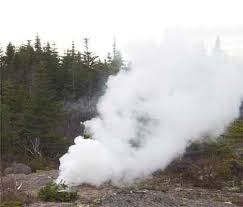 Sending a Signal
Sending a Signal
A whistle, smoke, strobe light, flare and several other things all send a message of “I’m here, Please come!”. You should have tools to send these types of messages in your Evac Kit, your BOB and your EDC. For our post reviewing whistles, click here.
Sending and Receiving
 There are several Radio Systems that you can learn and invest in. HAM radio is the most reliable system out there. You have to be certified to use them though, it’s very very easy to get licensed for Ham Radio, is very cheap and fast as well. If you haven’t gotten licensed yet, search for classes in your area and spend an afternoon getting your HAM Technician license. This will give you a call sign and authorize you for basic HAM use. There are several types of HAM radios you can get from a large base station to a hand-held portable. The one pictured installs in your vehicle.
There are several Radio Systems that you can learn and invest in. HAM radio is the most reliable system out there. You have to be certified to use them though, it’s very very easy to get licensed for Ham Radio, is very cheap and fast as well. If you haven’t gotten licensed yet, search for classes in your area and spend an afternoon getting your HAM Technician license. This will give you a call sign and authorize you for basic HAM use. There are several types of HAM radios you can get from a large base station to a hand-held portable. The one pictured installs in your vehicle.
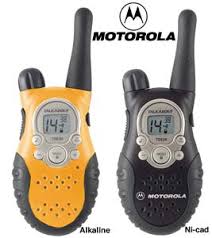 FRS (Family Radio Service) Radios are the cheapest and easiest radios to use. They only have a limited distance though and are totally unsecured. Anyone can use them. I suggest designating with your family ahead of time certain channels that your family will communicate on. For added security, you can create a rolling system. For instance, start on channel twelve at midnite and every hour roll one channel or subchannel forward. For simple family communication, just pick a channel, preset it, and leave it there. Consider providing every member of your family with one of these. Definitely put one in each vehicle, keep one in your BOB and in your EDC. If you’re looking for help, you can scan through the channels to find someone talking – if you can hear them, you know they are close. Butt in and ask for help.
FRS (Family Radio Service) Radios are the cheapest and easiest radios to use. They only have a limited distance though and are totally unsecured. Anyone can use them. I suggest designating with your family ahead of time certain channels that your family will communicate on. For added security, you can create a rolling system. For instance, start on channel twelve at midnite and every hour roll one channel or subchannel forward. For simple family communication, just pick a channel, preset it, and leave it there. Consider providing every member of your family with one of these. Definitely put one in each vehicle, keep one in your BOB and in your EDC. If you’re looking for help, you can scan through the channels to find someone talking – if you can hear them, you know they are close. Butt in and ask for help.
Keeping writing materials in your Evacuation Kit is also a good idea for several reasons. In an actual evacuation, it would be wise to regularly journal what is going on. It also gives you a way to send a message to someone. Having pre-stamped postcards allows you to address them to loved ones, like your extended family, and drop them a note that you’re ok.
Navigation
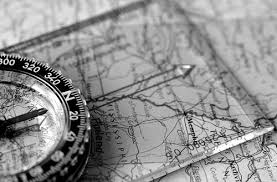 Even if you know where you’re going, you still have to know how to get there. When evacuating, you may NOT know where you’re going to go. Keeping tools and resources that will help you find somewhere to go and how to get there is very wise. Storing maps and compasses will help you both on the road and on foot. Having a GPS will be extremely helpful, but be cautious relying on it. Make sure you have spare batteries for it or a way to charge it. If you plan to bug out to the mountains or woods, make sure you have good topographical maps of your region and that you know how to use them.
Even if you know where you’re going, you still have to know how to get there. When evacuating, you may NOT know where you’re going to go. Keeping tools and resources that will help you find somewhere to go and how to get there is very wise. Storing maps and compasses will help you both on the road and on foot. Having a GPS will be extremely helpful, but be cautious relying on it. Make sure you have spare batteries for it or a way to charge it. If you plan to bug out to the mountains or woods, make sure you have good topographical maps of your region and that you know how to use them.
Nuclear/Bio/Chem
 We have several posts on the site that deal with Nuclear Preparedness, with more coming soon to complete the series. We also have several posts dealing with Pandemic Preparedness including how to put together a full Pandemic Kit. For a myriad of scenarios, you really should at least have an N95 Mask and Nitrile gloves in your Every Day Carry, Bug Out Bag and Evacuation Kits. These tools help keep you safe in scenarios beyond those mentioned such as a massive dust storm, wildfire, volcano, etc. Breathing is important!
We have several posts on the site that deal with Nuclear Preparedness, with more coming soon to complete the series. We also have several posts dealing with Pandemic Preparedness including how to put together a full Pandemic Kit. For a myriad of scenarios, you really should at least have an N95 Mask and Nitrile gloves in your Every Day Carry, Bug Out Bag and Evacuation Kits. These tools help keep you safe in scenarios beyond those mentioned such as a massive dust storm, wildfire, volcano, etc. Breathing is important!
This completes our review of the Master Evacuation Kit List. In our next post in the series we’ll talk more specifically about 72 Hour Kits, inventorying them and putting them together for kids.



Your important documents and computer files are crucial to take during an evacuation. It’s good to have them ready beforehand. Great post Utah!
Your important documents and computer files are crucial to take during an evacuation. It’s good to have them ready beforehand. Great post Utah!
Excellent article. Loads of practical information. Thank you.
Excellent article. Loads of practical information. Thank you.
I have recently acquired a full survival / preparedness mind set. I’ve always been “sort of” prepared but have been really serious about it recently. Like since last November. I’ve done a TON of reading and talking with friends who have had the mindset for a long time. Although there is a lot of information around I think your website is the absolute best. I like http://www.survivalblog.com but your site is more specific and just seems to hit a bulls eye for me. Thanks!
Rick Fallows
I have recently acquired a full survival / preparedness mind set. I’ve always been “sort of” prepared but have been really serious about it recently. Like since last November. I’ve done a TON of reading and talking with friends who have had the mindset for a long time. Although there is a lot of information around I think your website is the absolute best. I like http://www.survivalblog.com but your site is more specific and just seems to hit a bulls eye for me. Thanks!
Rick Fallows
Just now reading this. I’ve added Cell Phone Chargers, and Thumb Drives to the “Don’t Forget List”